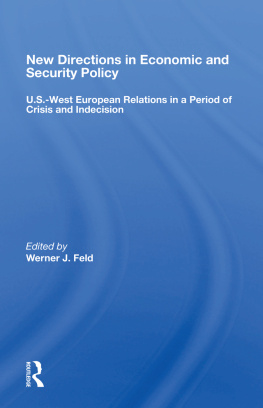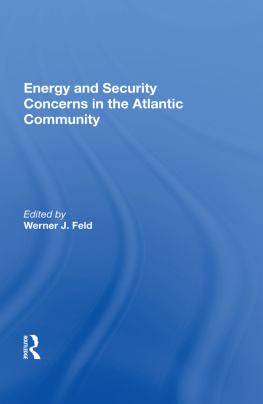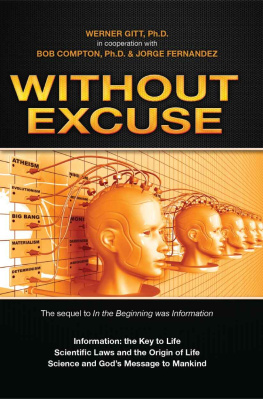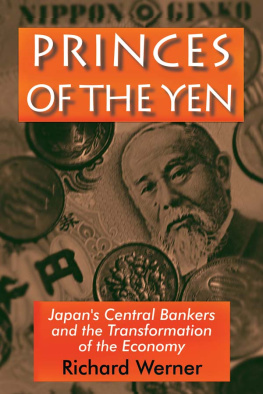First published 1992 by Westview Press, Inc.
Published 2018 by Routledge
52 Vanderbilt Avenue, New York, NY 10017
2 Park Square, Milton Park, Abingdon, Oxon OX14 4RN
Routledge is an imprint of the Taylor & Francis Group, an informa business
Copyright 1992 Taylor & Francis
All rights reserved. No part of this book may be reprinted or reproduced or utilised in any form or by any electronic, mechanical, or other means, now known or hereafter invented, including photocopying and recording, or in any information storage or retrieval system, without permission in writing from the publishers.
Notice:
Product or corporate names may be trademarks or registered trademarks, and are used only for identification and explanation without intent to infringe.
Library of Congress Cataloging-in-Publication Data
Parkman, Allen M.
No-fault divorce: what went wrong? / Allen M. Parkman.
p. cm.
Includes bibliographical references (p. ) and index.
ISBN 0-8133-1433-X
1. DivorceEconomic aspects. 2. No-fault divorceEconomic
aspectsUnited States. I. Title.
HQ814.P37 1992
306.89dc20 92-5560
CIP
ISBN 13: 978-0-367-00452-1 (hbk)
In this book I address the repercussions of no-fault divorce, first identifying the problems that have been created by no-fault and then offering a program for divorce law reform. I first became aware of these problems a decade ago when I was asked to appraise the professional goodwill of an orthopedic surgeon for his divorce settlement. The courts in a number of states, including New Mexico, had held that the goodwill of a professional individual was marital property subject to division at divorce. Although I was familiar with business goodwill, an intangible asset of a smoothly functioning business, professional goodwill was something new to me.
The appraisal of professional goodwill presented many difficult questions. What was professional goodwill worth? The usual procedure for estimating the value of goodwill is to compare the income of an ongoing business to that of a similar, but new, business that has not yet had time to acquire goodwill Applying this concept to professionals is difficult. Because of differences in characteristics such as intelligence, ambition, and willingness to accept risk, it is virtually impossible to identify the proportion of professional income attributable to goodwill.
When was professional goodwill acquired? Because property must be allocated between the separate property that existed at the time of marriage and the marital property created during the marriage, the timing of the acquisition of property can be important at divorce. Although the date a business was established usually can be determined, it is difficult, if not impossible, to establish when a professional career was initiated. A professional's income is the result of investments made throughout his or her life. Efforts during high school and college often make professional school possible. These investments may have been made by the professional, parents, taxpayers, or a spouse. Therefore, even if the value of professional goodwill can be estimated, its allocation between the separate property of the professional and the marital property of the couple may be unclear. I eventually reached the conclusion that the determination and allocation of professional goodwill at divorce was an extremely arbitrary process. So why had the concept developed? As I thought about that question, the answer became clear: no-fault divorce.
The courts were attempting to mitigate the dire financial situations of many divorced women that resulted from the no-fault divorce laws that became common in the 1970s. These law replaced the fault grounds for divorce, such as adultery, cruelty, and desertion, with the no-fault grounds of "incompatibility" or "irretrievable breakdown." Under fault divorce, the spouse seeking the divorce had to prove that the other spouse was guilty of a prohibited activity. That was usually not easy, so fabricated testimony was common. If one spouse did not want a divorce, the other spouse had to provide compensation to induce him or her to be the plaintiff and to provide the required testimony that established the fault grounds.
The fault grounds for divorce thus afforded the spouse who wanted to continue the marriage with substantial negotiating power. Alternatively, the no-fault grounds often provided for divorce based on the desire of only one spouse, removing the need to negotiate with an uncooperative spouse and shifting the financial arrangements at divorce to the legal standards. These legal standards, which were especially unfair to wives who had accommodated the career of their husbands, had not been subjected to close scrutiny under fault divorce because of the prevalence of negotiated settlements. The courts reacted to this situation by creating ad hoc concepts such as professional goodwill in an attempt to correct for the limited funds provided older women under the new divorce laws.
The case of the surgeon's wife is a common one. She was a middle-aged woman who had committed herself to being a housewife and mother. The couple had lived well on the surgeon's comfortable income, but they had accumulated only a limited amount of marital property. Their children had grown and left the home. At divorce, the wife faced a very gloomy future. Her share of the limited community property did not amount to much. There would be no child support. In the spirit of fairness and equality, the courts had moved toward short-term, rehabilitative spousal support instead of long-term alimony. The wife had limited employment prospects, but her husband was leaving the marriage with his income intact. The provision of professional goodwill created an additional source of funds for her.
The more I investigated how society was reacting to the no-fault grounds for divorce, the more I became convinced that no-fault divorce was creating many problems. It sanctioned socially undesirable divorces. It encouraged family members to make decisions that were not in the best interests of the other family members. It impoverished many divorced women and the children of divorced parents. Furthermore, I became convinced that an important reason the literature on no-fault didn't deal adequately with these problems was largely due to a failure to consider the insights available from an economic perspective. Economics studies the choices that people make in an environment in which wants exceed resources, so they must weigh the benefits and costs of the alternatives.
Although love and sexual attraction are appropriately associated with marriage and divorce, the benefit/cost framework of economics can provide valuable additional insights about how people decide to marry or to end a marriage. Marriage is one of the most important decisions that people make. The decision by an individual to marry another precludes--at least temporarily--the person's remaining single or marrying anyone else. From an economic perspective, that individual is presumed to consider the benefits of the marriage to exceed those of any alternate arrangement. The foregone benefits of the alternative arrangements are among the costs of the marriage. So long as the benefits of marriage exceed the costs for both spouses, the couple stays married. When the costs exceed the benefits for one spouse, that spouse may seek a divorce. The divorce laws influence the costs of dissolving a marriage. For example, no-fault reduced the costs of divorce for many spouses who wanted to dissolve their marriage.












